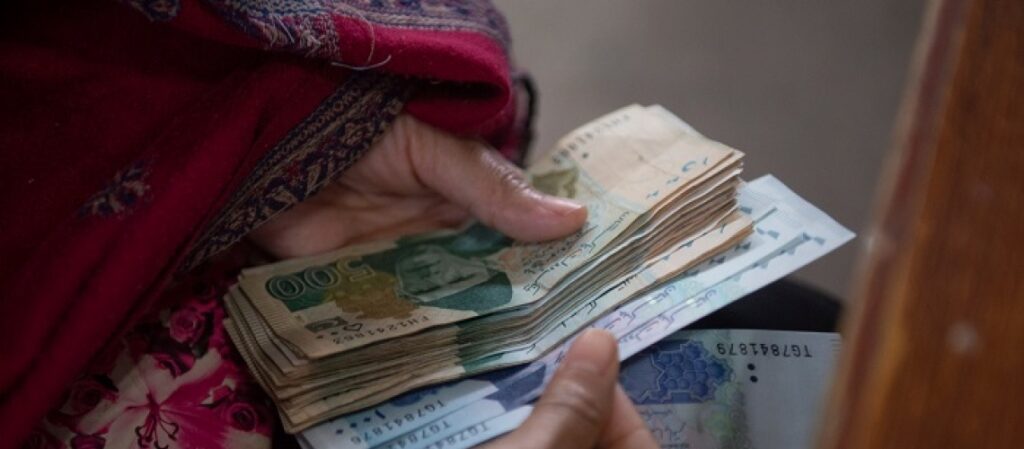ISLAMABAD: Remittance flows are a major source of income for all countries in South Asia, larger than all other capital inflows combined. In 2019, India received more remittances than any other country in dollar terms, and Nepal ranked third in the world in terms of remittances to GDP at 27 percent. According to a World Bank report, remittances seem to have been even more essential during the COVID-19 pandemic, increasing by 5.2 percent in 2020 in South Asia. But this was somewhat surprising because household surveys globally showed remittances falling, especially in the second quarter of 2020.

So, what happened in South Asia? Many studies indicate that remittances tend to increase when receiving households experience disasters or recessions. However, since the COVID-19 shock was global in nature, both home (recipient) and foreign (sender) countries were impacted. Migrant workers, many of whom- in North America, the EU, and the Middle East- are employed mostly in contact-intensive services sectors were particularly hard hit by COVID-19.
Our analysis in the World Bank’s latest South Asia Economic Focus shows that several factors help explain the large increase in remittances in 2020. Some also suggest there are great opportunities for policy interventions.

- Savings repatriation. A portion of the recorded rise in remittances could represent repatriated savings of emigrants returning home after losing their jobs or not finding new opportunities. One example: Saudi Arabia granted less than 10,000 work visas per quarter in the first and third quarters of 2020, compared to an average approval rate of over 40,000.
- Better capturing of remittance statistics. Remittances could have shifted from informal (unrecorded) to formal (recorded) channels. Part of the increase was just recording of flows unnoticed in the past in official statistics, not an actual increase . Before COVID-related travel restrictions, a significant share of remittances may have arrived through trips home by migrants or their trusted friends with cash in hand, gifts, etc. This was no longer an option during the pandemic.
- Generosity. Dire economic conditions in South Asia could have encouraged greater giving by migrants’ close-knit family and community ties. South Asian countries rank high compared to other middle-income countries on a measure of altruism based on FINDEX . Current giving campaigns by diaspora amid the health crisis in India suggest this altruism is alive and well in 2021!
- Financial innovation. The shift to more formal channels was facilitated by the accelerated development of Fintech and digital transfer apps such as G-pay and Alipay, which have made the digital transfer of funds more accessible and cheaper per transaction, leading to an overall increase in remittances.
- Tax incentives. Increasingly, policymakers want to encourage greater formal remittances. Pakistan and Bangladesh, which (along with Mexico) saw the highest surge in remittances in a sample of 45 developing countries, had recently introduced new remittance tax incentives. This one-off change may explain the high growth rate in 2020.
- Host country transfers. Some migrants were able to access cash transfers offered by host country governments, which would allow then to send home higher amounts than normal (e.g., stimulus payments in the United States).
It’s not clear which effect mattered more, let alone whether the increase in remittances is temporary or permanent. Much will depend on post-COVID migration policies in host countries.
But as in other areas of policy, the pandemic has provided an opportunity to better reap the economic benefits of migrant work. For the host countries, migrants are willing to work hard and consistently if provided with reasonable opportunities, raising growth potential in host countries–many of which are facing long-term national labor supply shortfalls amid lower birth rates and aging populations. For many low-income households in the receiving country, remittances are a key stable tool of poverty alleviation.
The pandemic has also accelerated innovation and competition in digital platforms. South Asian governments can work with host countries to expand job-matching sites, establish registries, and sponsor ‘fintech’ platforms that will further bring down the cost of digital payments. Single-corridor Fintech solutions are giving way to multiple-corridor platforms, which could enable local institutions to access both sender and receiver through digital wallets. A low-hanging fruit for policymakers!
I am an experienced writer, analyst, and author. My exposure in English journalism spans more than 28 years. In the past, I have been working with daily The Muslim (Lahore Bureau), daily Business Recorder (Lahore/Islamabad Bureaus), Daily Times, Islamabad, daily The Nation (Lahore and Karachi). With daily The Nation, I have served as Resident Editor, Karachi. Since 2009, I have been working as a Freelance Writer/Editor for American organizations.










